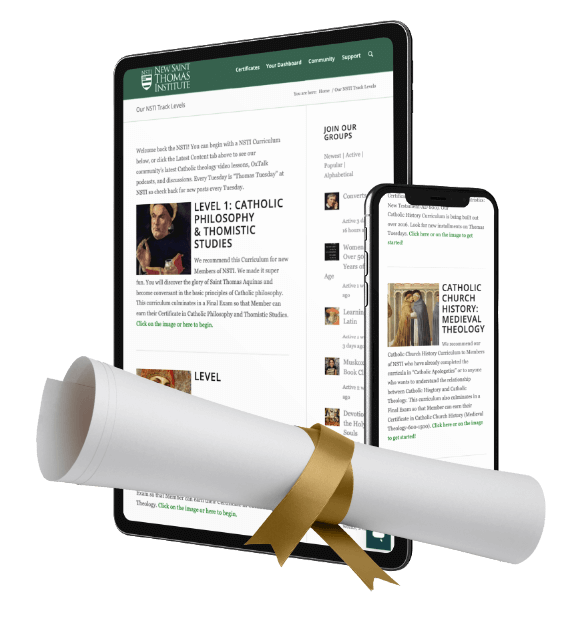How Charlemagne Discovered the Relics of Saint Anne the Mother of Mary
Saint Anne holding her daughter the Virgin Mary
I love Saint Anne (she is my wife’s patron) and I love Charlemagne (our dog is named Charlemagne). So the following story is especially dear to me. It’s also one of the best relics story of all time.
On Easter AD 792, Charlemagne discovered the relics of Saint Anne with the help of a deaf handicapped boy. It’s a wonderful tale for this feast day of Saint Anne.
Below is the account, preserved in the correspondence of Pope Saint Leo III, concerning the discovery of the relics of Saint Anne in the presence of the Emperor Charlemagne.
Fourteen years after Our Lord’s death, Saint Mary Magdalen, Saint Martha, Saint Lazarus, and the others of the little band of Christians who were piled into a boat without sails or oars and pushed out to sea to perish — in the persecution of the Christians by the Jews of Jerusalem — were careful to carry with them the tenderly loved body of Our Lady’s mother. They feared lest it be profaned in the destruction, which Jesus had told them was to come upon Jerusalem. When, by the power of God, their boat sur vived and finally drifted to the shores of France, the little company of saints buried Saint Anne’s body in a cave, in a place called Apt, in the south of France. The church, which was later built over the spot, fell into decay because of wars and religious persecutions, and as the centuries passed, the place of Saint Anne’s tomb was forgotten.
The long years of peace, which Charlemagne’s wise rule gave to southern France, enabled the people to build a magnificent new church on the site of the old chapel at Apt. Extraordinary and painstaking labor went into the building of the great structure, and when the day of its consecration arrived [Easter Sunday, 792 A.D.], the beloved Charlemagne, little suspecting what was in store for him, declared himself happy indeed to have jour neyed so many miles to be present for the holy occasion. At the most solemn part of the ceremonies, a boy of fourteen, blind, deaf and dumb from birth — and usually quiet and impassive — to the amaze ment of those who knew him, completely distracted the at tention of the entire congrega tion by becoming suddenly tremendously excited. He rose from his seat, walked up the aisle to the altar steps, and to the consternation of the whole church, struck his stick re soundingly again and again upon a single step.
His embarrassed family tried to lead him out, but he would not budge. He contin ued frantically to pound the step, straining with his poor muted senses to impart a knowledge sealed hopelessly within him. The eyes of the people turned upon the em peror, and he, apparently in spired by God, took the matter into his own hands. He called for workmen to remove the steps.
A subterranean passage was revealed directly below the spot, which the boy’s stick had indicated. Into this pas sage the blind lad jumped, to be followed by the emperor, the priests, and the workmen.
They made their way in the dim light of candles, and when, farther along the pas sage, they came upon a wall that blocked further ad vance, the boy signed that this also should be removed. When the wall fell, there was brought to view still another long, dark corridor. At the end of this, the searchers found a crypt, upon which, to their profound wonderment, a vigil lamp, alight and burning in a little walled recess, cast a heavenly radiance.
As Charlemagne and his afflicted small guide, with their companions, stood be fore the lamp, its light went out. And at the same moment, the boy, blind and deaf and dumb from birth, felt sight and hearing and speech flood into his young eyes, his ears, and his tongue.
“It is she! It is she!” he cried out. The great emperor, not knowing what he meant, nevertheless repeated the words after him. The call was taken up by the crowds in the church above, as the people sank to their knees, bowed in the realization of the presence of something celestial and holy.
The crypt at last was opened, and a casket was found within it. In the casket was a winding sheet, and in the sheet were relics, and upon the relics was an inscrip tion that read, “Here lies the body of Saint Anne, mother of the glorious Virgin Mary.” The winding sheet, it was noted, was of eastern design and texture.
Charlemagne, over whelmed, venerated with pro found gratitude the relics of the mother of Heaven’s Queen. He remained a long time in prayer. The priests and the people, awed by the graces given them in such abundance and by the choice of their countryside for such a heavenly manifestation, for three days spoke but rarely, and then in whispers.
The emperor had an exact and detailed account of the miraculous finding drawn up by a notary and sent to Pope Saint Leo III, with an accom panying letter from himself. These documents and the pope’s reply are preserved to this day. Many papal bulls have attested, over and over again, to the genuineness of Saint Anne’s relics at Apt.
Do you enjoy reading Canterbury Tales by Taylor Marshall? Make it easier to receive daily posts. It’s free. Please click here to sign up by Feed or here to sign up by Email. Please also explore Taylor’s books about Catholicism at amazon.com.
What to Watch Next
More lurid writings by Cardinal Victor Manuel Fernández, Prefect for the Dicastery for the Doctrine of the...
Brigitte Macron, a public supporter of abortion, euthanasia, and LGBT rights, and who is not known to...
The Vatican just released it’s Study on the Female Diaconate, convened by Pope Francis as part of...
SHOP THE TAYLOR MARSHALL STORE
Dive Deeper

GET CONFIDENT IN YOUR FAITH
Explore the fascinating world of Catholic teachings with Dr. Marshall. Together you’ll unpack the brilliant answers the Church gives to tough questions about the Faith. The best part: you go at your own pace. Start this exciting journey today.


 >
>



